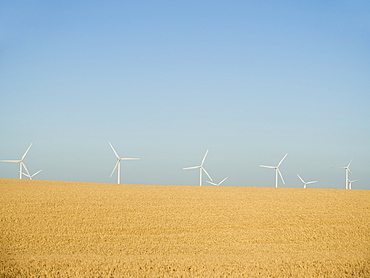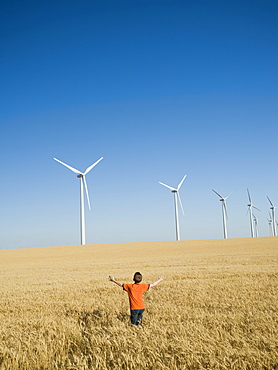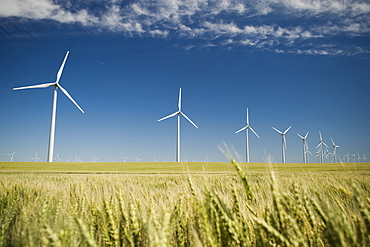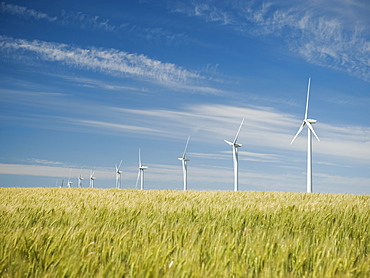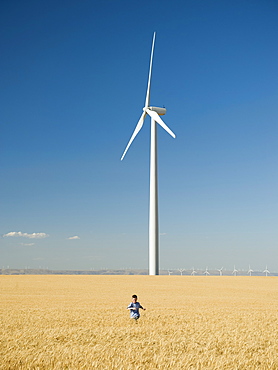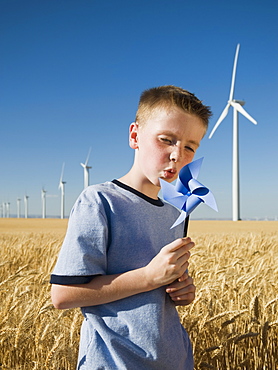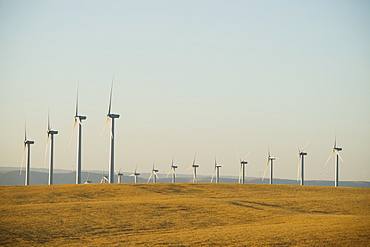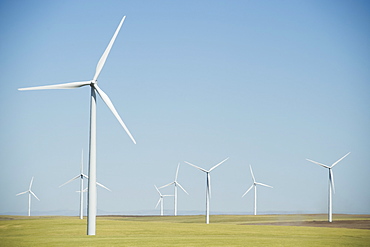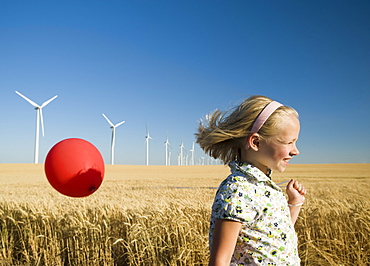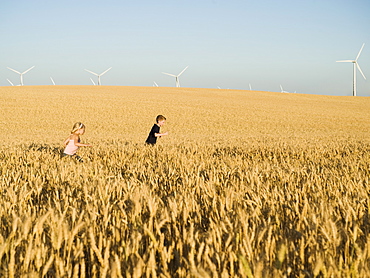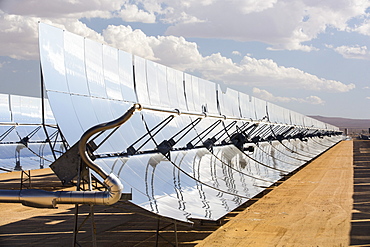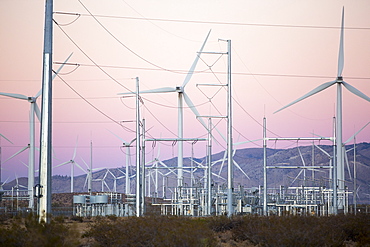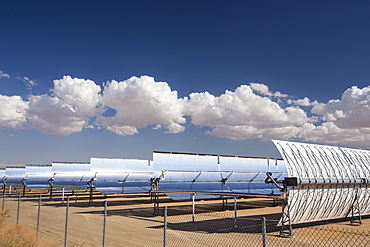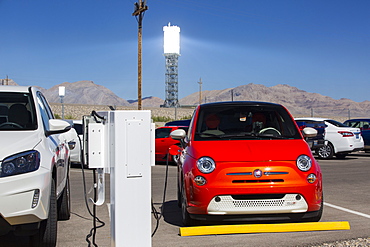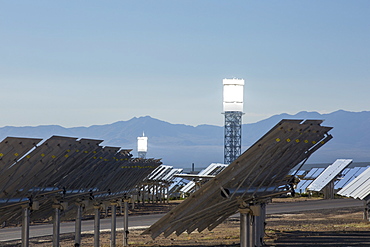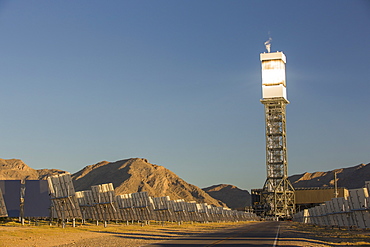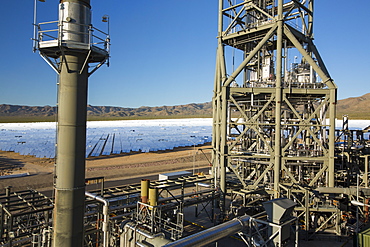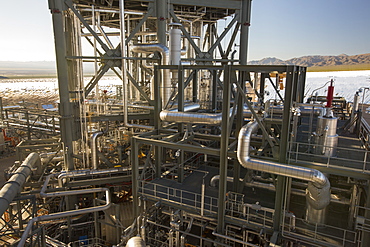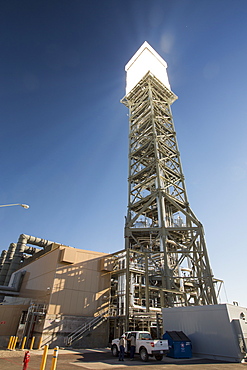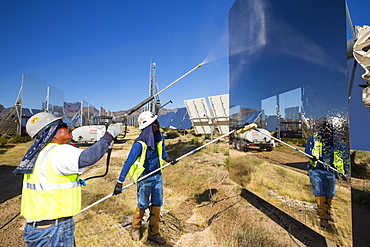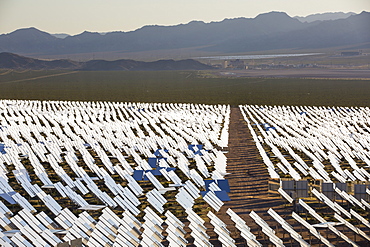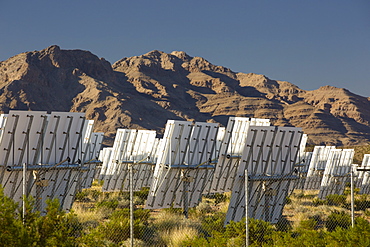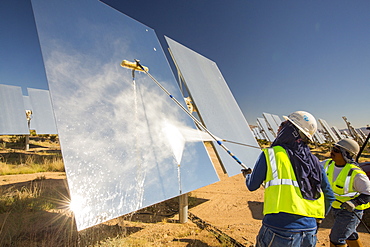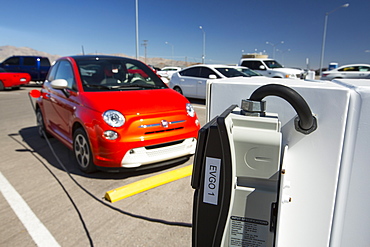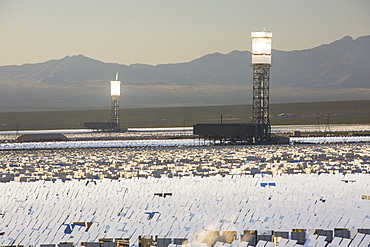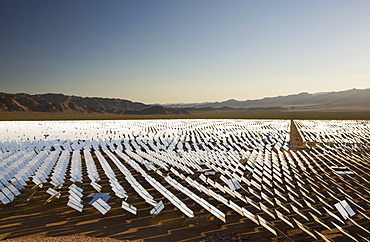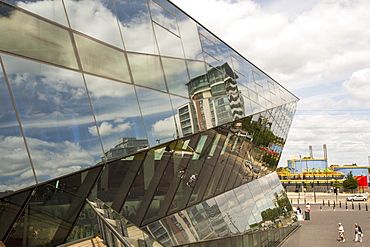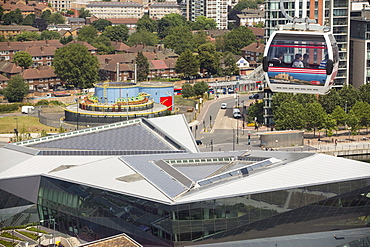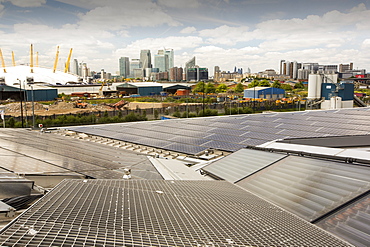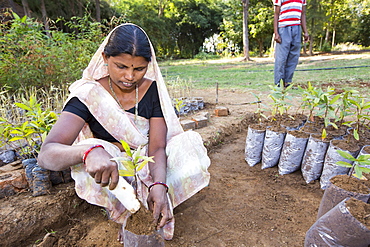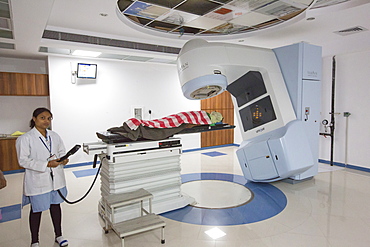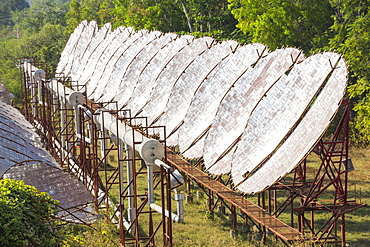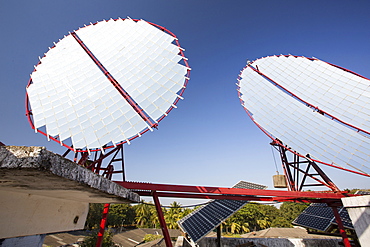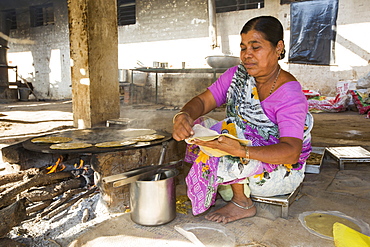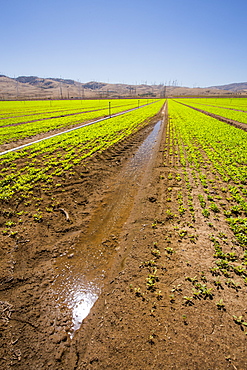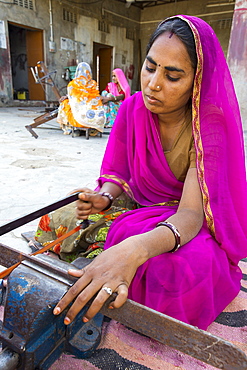Recent searches
Loading...
1178-15801 - Model wind turbines in grass on yellow background
1178-22180 - Children running through tall wheat field on wind farm
1178-11712 - Construction worker installing solar panel on roof
1178-11713 - Construction worker installing solar panel on roof
1178-11716 - Construction worker installing solar panel on roof
1178-11717 - Construction worker installing solar panel on roof
1178-11720 - Construction worker installing solar panel on roof
1178-11711 - Construction worker installing solar panel on roof
1178-11715 - Construction workers installing solar panels on roof
1178-11719 - Construction workers installing solar panels on roof
1178-11714 - Construction workers installing solar panels on roof
1174-3397 - Wind turbines at dusk in a field of summer wheat, Energy production, Washington, USA
911-10798 - The 354 megawatts SEGS plant at Kramer Junction is the second largest solar thermal power plant in the world, mojave Desert, California, USA.
911-10728 - Part of the Tehachapi Pass wind farm, the first large scale wind farm area developed in the US, California, USA.
911-10797 - Pylons take renewable electricity from the Copper Mountain Solar power plant in Nevada, USA.
911-10729 - Part of the Tehachapi Pass wind farm, the first large scale wind farm area developed in the US, California, USA.
911-10731 - Crops being irrigated below the Tehachapi Pass wind farm, the first large scale wind farm area developed in the US, California, USA.
911-10796 - Pylons carrying solar electric from the Copper Mountain Solar 3 project, is a 250-megawatt solar power plant that produces enough energy to power 80, 000 homes, in Nevada, USA.
911-10727 - Part of the Tehachapi Pass wind farm, the first large scale wind farm area developed in the US, California, USA, at sunrise.
911-10733 - Part of the Tehachapi Pass wind farm, the first large scale wind farm area developed in the US, California, USA, at sunrise.
911-10732 - Part of the Tehachapi Pass wind farm, the first large scale wind farm area developed in the US, California, USA, at sunrise.
911-10799 - The 354 megawatts SEGS plant at Kramer Junction is the second largest solar thermal power plant in the world, mojave Desert, California, USA.
911-10730 - Part of the Tehachapi Pass wind farm, the first large scale wind farm area developed in the US, California, USA.
1178-11216 - Wind farm in front of mountains, Palm Springs, California, United States
911-10687 - Electric cars being recharged at the Ivanpah Solar Thermal Power Plant in California''s Mojave Desert is currently the largest solar thermal plant in the world. It generates 392 megawatts (MW) and deploys 173,500 heliostats that reflect the suns rays onto three solar towers. It covers 4,000 acres of desert.
911-10681 - The Ivanpah Solar Thermal Power Plant in California''s Mojave Desert is currently the largest solar thermal plant in the world. It generates 392 megawatts (MW) and deploys 173,500 heliostats that reflect the suns rays onto three solar towers. It covers 4,000 acres of desert.
911-10684 - The Ivanpah Solar Thermal Power Plant in California''s Mojave Desert is currently the largest solar thermal plant in the world. It generates 392 megawatts (MW) and deploys 173,500 heliostats that reflect the suns rays onto three solar towers. It covers 4,000 acres of desert.
911-10677 - The Ivanpah Solar Thermal Power Plant in California''s Mojave Desert is currently the largest solar thermal plant in the world. It generates 392 megawatts (MW) and deploys 173,500 heliostats that reflect the suns rays onto three solar towers. It covers 4,000 acres of desert.
911-10679 - The Ivanpah Solar Thermal Power Plant in California''s Mojave Desert is currently the largest solar thermal plant in the world. It generates 392 megawatts (MW) and deploys 173,500 heliostats that reflect the suns rays onto three solar towers. It covers 4,000 acres of desert.
911-10689 - The Ivanpah Solar Thermal Power Plant in California''s Mojave Desert is currently the largest solar thermal plant in the world. It generates 392 megawatts (MW) and deploys 173,500 heliostats that reflect the suns rays onto three solar towers. It covers 4,000 acres of desert.
911-10690 - The Ivanpah Solar Thermal Power Plant in California''s Mojave Desert is currently the largest solar thermal plant in the world. It generates 392 megawatts (MW) and deploys 173,500 heliostats that reflect the suns rays onto three solar towers. It covers 4,000 acres of desert.
911-10691 - The Ivanpah Solar Thermal Power Plant in California''s Mojave Desert is currently the largest solar thermal plant in the world. It generates 392 megawatts (MW) and deploys 173,500 heliostats that reflect the suns rays onto three solar towers. It covers 4,000 acres of desert.
911-10693 - Workers washing the heliostats to maximise reflective power at the Ivanpah Solar Thermal Power Plant in California''s Mojave Desert is currently the largest solar thermal plant in the world. It generates 392 megawatts (MW) and deploys 173,500 heliostats that reflect the suns rays onto three solar towers. It covers 4,000 acres of desert.
911-10683 - The Ivanpah Solar Thermal Power Plant in California''s Mojave Desert is currently the largest solar thermal plant in the world. It generates 392 megawatts (MW) and deploys 173,500 heliostats that reflect the suns rays onto three solar towers. It covers 4,000 acres of desert.
911-10682 - The Ivanpah Solar Thermal Power Plant in California''s Mojave Desert is currently the largest solar thermal plant in the world. It generates 392 megawatts (MW) and deploys 173,500 heliostats that reflect the suns rays onto three solar towers. It covers 4,000 acres of desert.
911-10678 - The Ivanpah Solar Thermal Power Plant in California''s Mojave Desert is currently the largest solar thermal plant in the world. It generates 392 megawatts (MW) and deploys 173,500 heliostats that reflect the suns rays onto three solar towers. It covers 4,000 acres of desert.
911-10692 - Workers washing the heliostats to maximise reflective power at the Ivanpah Solar Thermal Power Plant in California''s Mojave Desert is currently the largest solar thermal plant in the world. It generates 392 megawatts (MW) and deploys 173,500 heliostats that reflect the suns rays onto three solar towers. It covers 4,000 acres of desert.
911-10694 - Electric cars being recharged at the Ivanpah Solar Thermal Power Plant in California''s Mojave Desert is currently the largest solar thermal plant in the world. It generates 392 megawatts (MW) and deploys 173,500 heliostats that reflect the suns rays onto three solar towers. It covers 4,000 acres of desert.
911-10680 - The Ivanpah Solar Thermal Power Plant in California''s Mojave Desert is currently the largest solar thermal plant in the world. It generates 392 megawatts (MW) and deploys 173,500 heliostats that reflect the suns rays onto three solar towers. It covers 4,000 acres of desert.
911-10688 - The Ivanpah Solar Thermal Power Plant in California''s Mojave Desert is currently the largest solar thermal plant in the world. It generates 392 megawatts (MW) and deploys 173,500 heliostats that reflect the suns rays onto three solar towers. It covers 4,000 acres of desert.
911-10685 - Workers washing the heliostats to maximise reflective power at the Ivanpah Solar Thermal Power Plant in California''s Mojave Desert is currently the largest solar thermal plant in the world. It generates 392 megawatts (MW) and deploys 173,500 heliostats that reflect the suns rays onto three solar towers. It covers 4,000 acres of desert.
911-10686 - Electric cars being recharged at the Ivanpah Solar Thermal Power Plant in California''s Mojave Desert is currently the largest solar thermal plant in the world. It generates 392 megawatts (MW) and deploys 173,500 heliostats that reflect the suns rays onto three solar towers. It covers 4,000 acres of desert.
911-10672 - Solar thermal and solar PV panels on the roof of the Crystal building which is the first building in the world to be awarded an outstanding BREEAM (BRE Environmental Assessment Method) rating and a LEED (Leadership in Energy and Environmental Design) platinum rating. London, UK.
911-10674 - The Crystal building which is the first building in the world to be awarded an outstanding BREEAM (BRE Environmental Assessment Method) rating and a LEED (Leadership in Energy and Environmental Design) platinum rating. London, UK.
911-10675 - Solar thermal and solar PV panels on the roof of the Crystal building which is the first building in the world to be awarded an outstanding BREEAM (BRE Environmental Assessment Method) rating and a LEED (Leadership in Energy and Environmental Design) platinum rating. London, UK.
911-10673 - Solar thermal and solar PV panels on the roof of the Crystal building which is the first building in the world to be awarded an outstanding BREEAM (BRE Environmental Assessment Method) rating and a LEED (Leadership in Energy and Environmental Design) platinum rating. London, UK.
911-10642 - A solar park at Wheal Jane an old abandoned Cornish tin mine near Redruth, UK, that is rediscovering itself as a renewable energy hub, with the old mine buildings in the background.
911-10643 - A solar park at Wheal Jane an old abandoned Cornish tin mine near Redruth, UK, that is rediscovering itself as a renewable energy hub.
911-10638 - The Muni Seva Ashram in Goraj, near Vadodara, India, is a tranquil haven of humanitarian care. The Ashram is hugely sustainable, next year it will be completely carbon neutral. Its first solar panels were installed in 1984, long before climate change was on anyones agenda. Their energy is provided from solar panels, and wood grown on the estate. Waste food and animal manure is turned inot biogas to run the estates cars and also used for cooking. Solar cookers are also used, and the air conditioning for the hospital is solar run. 70 % of the food used is grown on the estate. They provide an orphanage, schools for all ages, vocational training, care for the elderly, a specialist cancer hospital withstate of the art machinary, and even have a solar crematorium. This shot shows the girls school.
911-10637 - The Muni Seva Ashram in Goraj, near Vadodara, India, is a tranquil haven of humanitarian care. The Ashram is hugely sustainable, next year it will be completely carbon neutral. Its first solar panels were installed in 1984, long before climate change was on anyones agenda. Their energy is provided from solar panels, and wood grown on the estate. Waste food and animal manure is turned inot biogas to run the estates cars and also used for cooking. Solar cookers are also used, and the air conditioning for the hospital is solar run. 70 % of the food used is grown on the estate. They provide an orphanage, schools for all ages, vocational training, care for the elderly, a specialist cancer hospital withstate of the art machinary, and even have a solar crematorium. This shot shows a woman planting trees for onward growth in the Ashrams forests.
911-10636 - The Muni Seva Ashram in Goraj, near Vadodara, India, is a tranquil haven of humanitarian care. The Ashram is hugely sustainable, next year it will be completely carbon neutral. Its first solar panels were installed in 1984, long before climate change was on anyones agenda. Their energy is provided from solar panels, and wood grown on the estate. Waste food and animal manure is turned inot biogas to run the estates cars and also used for cooking. Solar cookers are also used, and the air conditioning for the hospital is solar run. 70 % of the food used is grown on the estate. They provide an orphanage, schools for all ages, vocational training, care for the elderly, a specialist cancer hospital withstate of the art machinary, and even have a solar crematorium. This shot shows a Varian nuclear proton therapy machine in the specialist cancer hospital.
911-10641 - The Muni Seva Ashram in Goraj, near Vadodara, India, is a tranquil haven of humanitarian care. The Ashram is hugely sustainable, next year it will be completely carbon neutral. Its first solar panels were installed in 1984, long before climate change was on anyones agenda. Their energy is provided from solar panels, and wood grown on the estate. Waste food and animal manure is turned inot biogas to run the estates cars and also used for cooking. Solar cookers are also used, and the air conditioning for the hospital is solar run. 70 % of the food used is grown on the estate. They provide an orphanage, schools for all ages, vocational training, care for the elderly, a specialist cancer hospital withstate of the art machinary, and even have a solar crematorium. This shot shows the solar air conditioning for the Ashram's hospital.
911-10639 - The Muni Seva Ashram in Goraj, near Vadodara, India, is a tranquil haven of humanitarian care. The Ashram is hugely sustainable, next year it will be completely carbon neutral. Its first solar panels were installed in 1984, long before climate change was on anyones agenda. Their energy is provided from solar panels, and wood grown on the estate. Waste food and animal manure is turned inot biogas to run the estates cars and also used for cooking. Solar cookers are also used, and the air conditioning for the hospital is solar run. 70 % of the food used is grown on the estate. They provide an orphanage, schools for all ages, vocational training, care for the elderly, a specialist cancer hospital withstate of the art machinary, and even have a solar crematorium. This shot shows solar panels that focus the suns rays on heat exchangers to boil oil, which is then sent down to the kitchens below to heat the cookers.
911-10635 - The Muni Seva Ashram in Goraj, near Vadodara, India, is a tranquil haven of humanitarian care. The Ashram is hugely sustainable, next year it will be completely carbon neutral. Its first solar panels were installed in 1984, long before climate change was on anyones agenda. Their energy is provided from solar panels, and wood grown on the estate. Waste food and animal manure is turned inot biogas to run the estates cars and also used for cooking. Solar cookers are also used, and the air conditioning for the hospital is solar run. 70 % of the food used is grown on the estate. They provide an orphanage, schools for all ages, vocational training, care for the elderly, a specialist cancer hospital withstate of the art machinary, and even have a solar crematorium. This shot shows a Hematology Analyzer for analyzing blood in one of the labs in the specialist cancer hospital.
911-10640 - The Muni Seva Ashram in Goraj, near Vadodara, India, is a tranquil haven of humanitarian care. The Ashram is hugely sustainable, next year it will be completely carbon neutral. Its first solar panels were installed in 1984, long before climate change was on anyones agenda. Their energy is provided from solar panels, and wood grown on the estate. Waste food and animal manure is turned inot biogas to run the estates cars and also used for cooking. Solar cookers are also used, and the air conditioning for the hospital is solar run. 70 % of the food used is grown on the estate. They provide an orphanage, schools for all ages, vocational training, care for the elderly, a specialist cancer hospital withstate of the art machinary, and even have a solar crematorium. This shot shows a cook preparing chapatis on a biofuel stove.
1178-9354 - Wind farm in front of mountains, Palm Springs, California, United States
1178-8310 - USA, Arizona, Page, Power station in desert near Lake Powell
1178-8309 - USA, Arizona, Page, Power station in desert near Lake Powell
1178-6561 - Wind turbines at green field with mountain on background, Oregon
1178-3595 - Front view of woman wearing green t-shirt
911-10459 - A protest banner against fracking at a farm site at Little Plumpton near Blackpool, Lancashire, UK, where the council for the first time in the UK, has granted planning permission for commercial fracking fro shale gas, by Cuadrilla.
911-10460 - A protest camp against fracking at a farm site at Little Plumpton near Blackpool, Lancashire, UK, where the council for the first time in the UK, has granted planning permission for commercial fracking fro shale gas, by Cuadrilla.
911-10320 - Crops being irrigated below the Tehachapi Pass wind farm, the first large scale wind farm area developed in the US, California, USA.
911-10048 - Women constructing solar cookers at the Barefoot College in Tilonia, Rajasthan, India. The Barefoot College is a worldwide charity, founded by Bunker Roy, its aims are, education, drinking water, electrification through solar power, skill development, health, women empowerment and the upliftment of rural people. The use of the cookers, vastly reduces the amount of fire wood women have to go out and collect from the forest.
911-10059 - Women on a solar workshop, learning how to make solar lanters at the Barefoot College in Tilonia, Rajasthan, India. The Barefoot College is a worldwide charity, founded by Bunker Roy, its aims are, education, drinking water, electrification through solar power, skill development, health, women empowerment and the upliftment of rural people. Many of the women are iliterate or semi literate. They are trained from countries all over the world, so that they can take their skills back and cascade the learning.
911-10051 - Women on a solar workshop, learning how to make solar lanters at the Barefoot College in Tilonia, Rajasthan, India. The Barefoot College is a worldwide charity, founded by Bunker Roy, its aims are, education, drinking water, electrification through solar power, skill development, health, women empowerment and the upliftment of rural people. Many of the women are iliterate or semi literate. They are trained from countries all over the world, so that they can take their skills back and cascade the learning.
911-10043 - Women constructing solar cookers at the Barefoot College in Tilonia, Rajasthan, India. The Barefoot College is a worldwide charity, founded by Bunker Roy, its aims are, education, drinking water, electrification through solar power, skill development, health, women empowerment and the upliftment of rural people.
911-10044 - Women constructing solar cookers at the Barefoot College in Tilonia, Rajasthan, India, demonstrate how hot the device is, by holding a sheet of newspaper which instantly sets on fire in the 300 degree Celcius heat. The Barefoot College is a worldwide charity, founded by Bunker Roy, its aims are, education, drinking water, electrification through solar power, skill development, health, women empowerment and the upliftment of rural people. The use of the cookers, vastly reduces the amount of fire wood women have to go out and collect from the forest.
911-10046 - Women constructing solar cookers at the Barefoot College in Tilonia, Rajasthan, India. The Barefoot College is a worldwide charity, founded by Bunker Roy, its aims are, education, drinking water, electrification through solar power, skill development, health, women empowerment and the upliftment of rural people.
911-10062 - Women welding joints during the construction of solar cookers at the Barefoot College in Tilonia, Rajasthan, India. The Barefoot College is a worldwide charity, founded by Bunker Roy, its aims are, education, drinking water, electrification through solar power, skill development, health, women empowerment and the upliftment of rural people. Solar cookers save women having to walk to the froest to cut down wood for cooking, thus saving the forests, and a daily chore for woman.
911-10045 - Women constructing solar cookers at the Barefoot College in Tilonia, Rajasthan, India. The Barefoot College is a worldwide charity, founded by Bunker Roy, its aims are, education, drinking water, electrification through solar power, skill development, health, women empowerment and the upliftment of rural people. The use of the cookers, vastly reduces the amount of fire wood women have to go out and collect from the forest.
911-10050 - Women on a solar workshop, learning how to make solar lanters at the Barefoot College in Tilonia, Rajasthan, India. The Barefoot College is a worldwide charity, founded by Bunker Roy, its aims are, education, drinking water, electrification through solar power, skill development, health, women empowerment and the upliftment of rural people. Many of the women are iliterate or semi literate. They are trained from countries all over the world, so that they can take their skills back and cascade the learning.
911-10057 - Women welding joints during the construction of solar cookers at the Barefoot College in Tilonia, Rajasthan, India. The Barefoot College is a worldwide charity, founded by Bunker Roy, its aims are, education, drinking water, electrification through solar power, skill development, health, women empowerment and the upliftment of rural people. Solar cookers save women having to walk to the froest to cut down wood for cooking, thus saving the forests, and a daily chore for woman.
